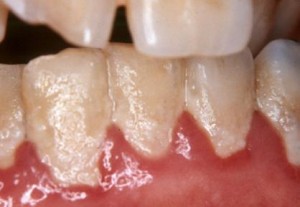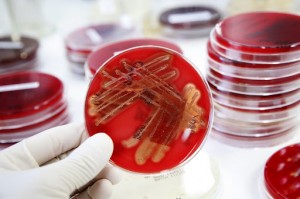What is plaque, really?
What is Plaque, really?
By Alon Dori
Here’s the scientific answer: Dental plaque is a soft deposit that accumulates on the teeth. Plaque can be defined as a complex microbial community, with greater than 1010 bacteria per milligram. It has been estimated that as many as 400 distinct bacterial species may be found in plaque. In addition to the bacterial cells, plaque contains a small number of epithelial cells, leukocytes, and macrophages. The cells are contained within an extracellular matrix, which is formed from bacterial products and saliva. The extracellular matrix contains protein, polysaccharide and lipids.
Here’s what it means in English: Dental plaque is basically comprised of three things: Food, Saliva and Bacteria…lot’s of bacteria (1010 = Ten Trillion per milligram!!). After we brush our teeth, the microscopic bacteria that did not get washed away begin to re-colonize our mouth almost immediately. Foods that are rich in sugars (not just the sweet stuff) like carbohydrates are fuel for many species of oral bacteria and help the germs to reproduce and grow. That’s why we brush our teeth; to keep the amount of germs in our mouth under control.
How can we get rid of the bacteria once and for all, you ask? This has two answers: 1) You can’t!, 2) Some bacteria is good. Let’s start with answer #1. Bacteria is everywhere. It can be found on every surface on Earth, you included. It has been around for billions of years and has evolved as the dominant organism on Earth as it has survived for so long and continues to survive. Generally, we think of bacteria as being bad because they cause disease and even death in other living things. But, this is not always true, which brings me to answer #2. Bacteria compete with each other for valuable real-estate. It’s kinda like the saying; “Better the devil you know than the devil you don’t”. The main bacteria that live in our mouth are Streptococcus sanguis, Streptococcus mutans, and Actinomyces viscosu. If they disappear (as a result of antibiotic drugs) other organisms like fungus can fill in the void and cause big problems like Thrush.
So, what’s the take home message? Our mouth is the perfect home for bacteria; it’s always warm, moist and food is delivered at least three times a day (exactly like a Petri dish, image 1 and 2). The main purpose of brushing (and flossing) is to keep the amount of bacteria in your mouth low. If you can scrape the plaque off your teeth with your fingernail, you are way past due for a good brushing.
Image 1: Plaque developing on teeth Image 2: Same bacteria developing in a Petri dish
Referrences:
1) Susan Kinder Haake, Microbiology of Dental Plaque, Dental Plaque: Structural, Microbiological and Developmental Characteristics. http://www.dent.ucla.edu/pic/members/microbio/mdphome.html
2) Carranza, Newman, Clinical Periodontology, 8th edition, Etiology of Periodontal Disease, page 83-206.
3) Martin S. Spiller, http://doctorspiller.com/Periodontal_Disease/Gum_Disease.htm


